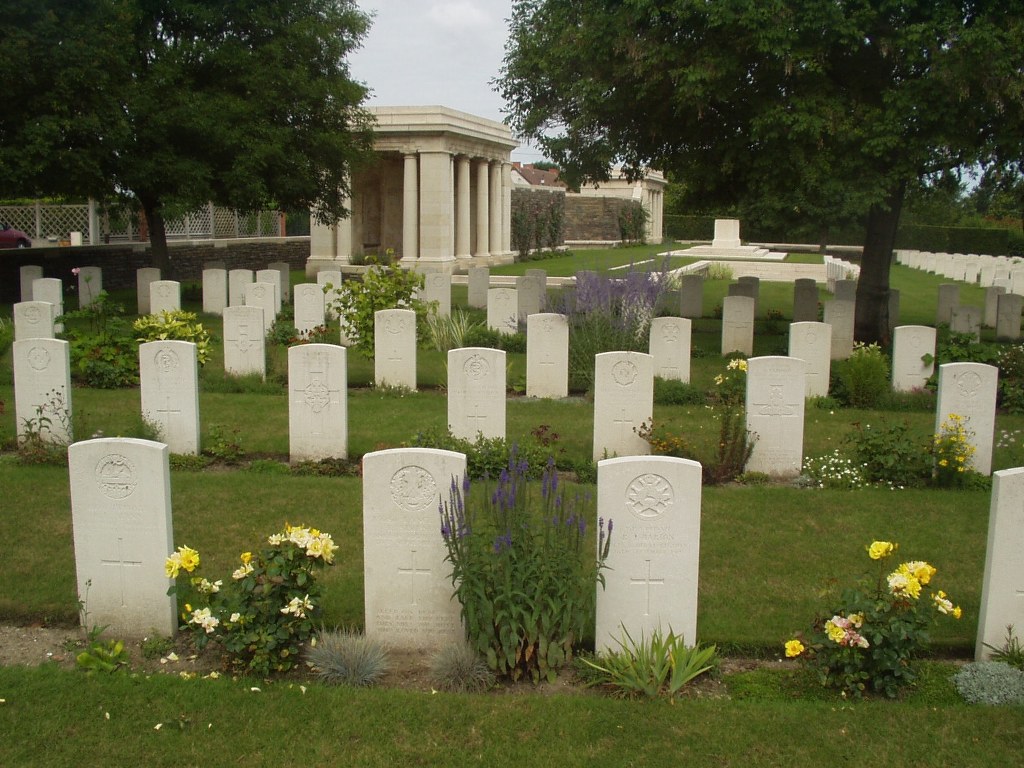Claude Proctor
Date of birth: 1898
Date of death: 25.2.1917
Area: Brotherton
Regiment: Northumberland Fusiliers
Family information: Son of Thomas and Jane Ann Proctor of Brotherton
Rank: Lance Corporal
Service number: 22460
War Service
Unusually, Claude Proctor was enrolled in the 13th (Service) Battalion of the Northumberland Fusiliers. This was formed of volunteers at Newcastle in September 1914 as part of K3 (Kitchener’s 3rd Army) and attached to 62nd Brigade, 21st Division.
The units of the Division initially concentrated in the Tring area, spending some time in camp at Halton Park before winter necessitated a move into local billets in Tring, Aylesbury, Leighton Buzzard, High Wycombe and Maidenhead. The artillery was at High Wycombe and Berkhamsted, RE at Chesham, and ASC at Dunstable.
In May 1915 the infantry moved to huts at Halton Park, the artillery went to Aston Clinton (One brigade staying at Berkhamsted) and the RE to Wendover. Rifles were received in late June 1915 and after firing their first course the infantry moved on 9th August to Witley Camp. Lord Kitchener inspected the Division on the march on 12th August.
Advanced parties embarked for France on 2nd September and the main body began to cross the Channel five days later. Units moved to assemble near Tilques, completing concentration on 13 September. The Division's first experience was truly appalling. Having been in France for only a few days, lengthy forced marches brought it into the reserve for the British assault at Loos. GHQ planning left it too far behind to be a useful reinforcement on the first day, but it was sent into action on 26 September, whereupon it suffered over 3,800 casualties for very little gain.
Claude’s experiences here would have been very similar to those of Alma Pickering (see earlier) who’s regiment was in the same division. At some point in his service Claude was promoted to Lance Corporal.
The Division served on the Western Front for the remainder of the war, taking part in many of the significant actions:
1915
The Battle of Loos (for details see account on Alma Pickering)
1916
The Battle of Albert*
The Battle of Bazentin Ridge*
The Battle of Flers-Courcelette*
The Battle of Morval* in which the Division captured Geudecourt (See Alma Pickering account)
The Battle of Le Transloy*
The battles marked * are phases of the Battles of the Somme 1916
1917
Claude Proctor was killed on 26th February 1916.
Early 1917 was not marked by any specific large scale operations like at Mons or the Somme etc. It seems that Claude may have suffered a similar fate to Frederick Poulson and again the place where he is buried may offer some clues.
Vermelles was in German hands from the middle of October 1914 to the beginning of December 1914, when it was recaptured by the French. The cemetery was begun in August 1915 (though a few graves are slightly earlier), and during the Battle of Loos, when the Chateau was used as a dressing station. It is in an area of the Western Front which is located between the towns of Bethune and la Bassee. It is roughly 30 miles south of Ypres and 20-25 miles north of the Somme battlefields.
Whilst the lesser-known sectors may not have seen the very large set-piece battles of the Somme and the Ypres Salient, there were battles fought here and in some cases particular sectors were loathed by the soldiers who spent time there.
So, as with Frederick Poulson, it would seem that having survived action in some of the more well-known battles Claude was, perhaps, the victim of more mundane circumstances - the small scale artillery attacks, small firearms, enfilade, sniping etc.
Family Life
The Proctor family were ‘comers in’ to Brotherton in that Claude’s parents both originated outside the village. Thomas Proctor was born in Cawood whilst his wife Jane Ann (nee Wood) hailed from Wingate near Durham. They were married in Pontefract during the autumn of 1890. Thomas would have been 38 at the time.
In 1901 they lived in Low Street and had had 4 children - Eveline (10), Nowell (8), Leila (5) and Claude who was 3 years old. As were many of
his neighbours Thomas was a ‘miner’.
Still living in Low Street in 1911the family had altered. Nowell had left, Eveline (20) was a “milliner”, and Claude (13) was “Apprenticed to a Joiner”. Additions were Sarah Elizabeth (7) and Mabel (5).There was also a relative called Elizabeth Wood aged 84 who had been born in Penrith. This would most probably be jane Ann’s mother.
 Vermelles British Cemetery
Vermelles British Cemetery

